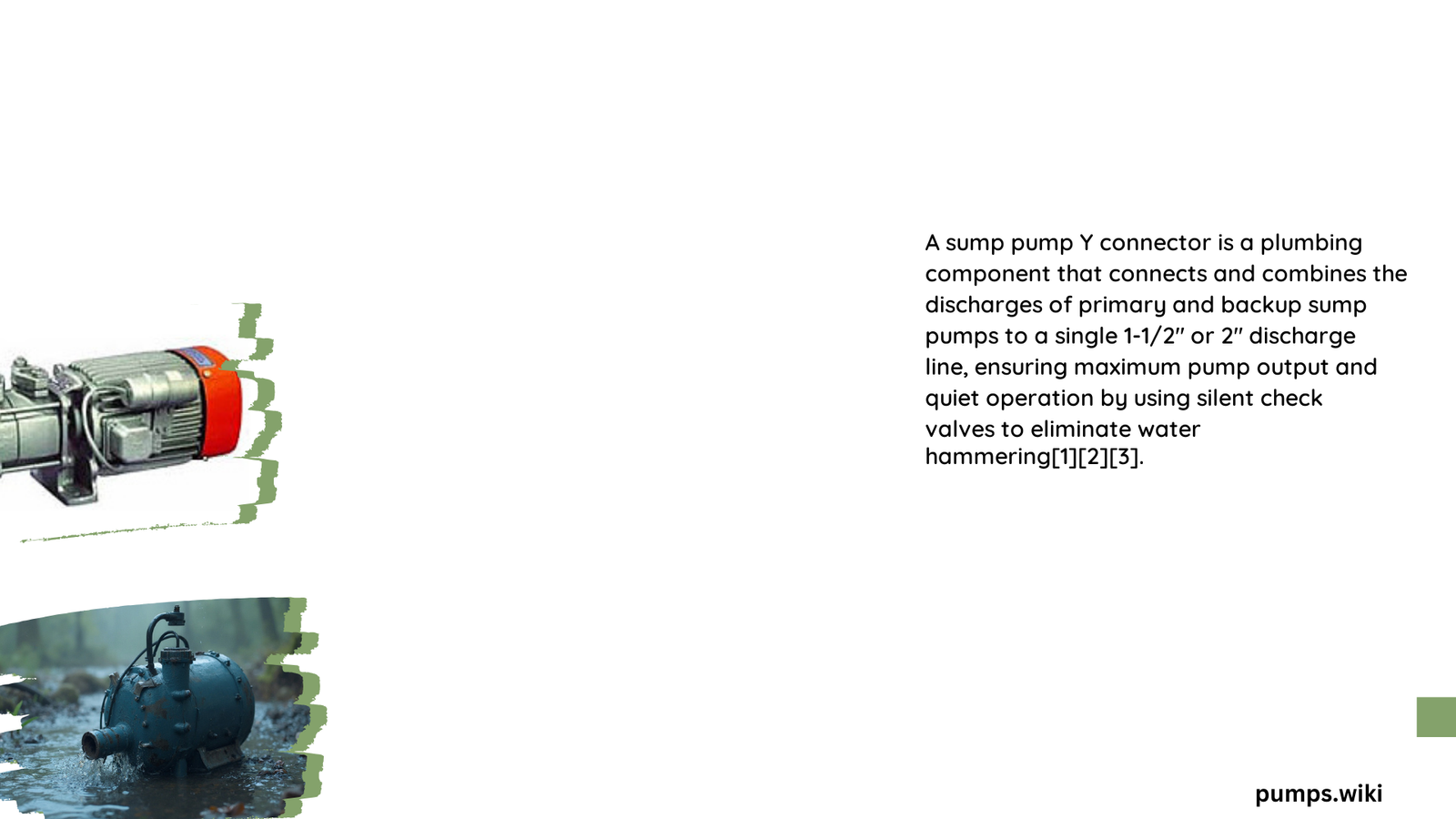A sump pump y connector is a critical plumbing component that enables multiple sump pumps to share a single discharge pipe, dramatically improving water removal efficiency. This innovative device allows homeowners to create redundant drainage systems, preventing basement flooding by distributing water removal tasks across two separate pumps. By understanding its design, installation, and strategic benefits, property owners can significantly enhance their basement’s water management capabilities.
What Makes a Sump Pump Y Connector Essential?
Why Do Homeowners Need a Sump Pump Y Connector?
Sump pump y connectors solve multiple water drainage challenges by providing a unified discharge mechanism for dual pump systems. These specialized connectors offer:
- Redundant Water Removal: Ensures continuous water extraction even if one pump fails
- Increased Discharge Capacity: Combines multiple pump outputs into a single drainage line
- Space-Efficient Design: Reduces complex piping configurations
What Are the Primary Materials for Y Connectors?
Manufacturers typically construct sump pump y connectors using:
| Material | Durability | Corrosion Resistance | Cost |
|---|---|---|---|
| PVC | High | Excellent | Low |
| Stainless Steel | Very High | Superior | High |
| Heavy-Duty Plastic | Moderate | Good | Medium |
How to Select the Correct Y Connector Size?
Selecting the appropriate sump pump y connector requires careful consideration of several factors:
- Discharge Pipe Diameter
- Standard sizes: 1-1/2″ and 2″
- Match existing pipe configurations
-
Verify manufacturer specifications
-
Total Pump Capacity
- Calculate combined gallons per hour (GPH)
- Ensure y connector can handle maximum water volume
- Consider peak drainage requirements
What Tools Are Needed for Y Connector Installation?
Essential installation tools include:
- Adjustable wrench
- Teflon tape
- Pipe cutter
- Rubber couplings
- Check valves
- Adapter fittings
Step-by-Step Y Connector Installation Process
Preparation Phase
- Turn off power to sump pumps
- Disconnect existing discharge pipes
- Clean connection areas thoroughly
Connection Phase
- Apply Teflon tape to pipe threads
- Attach y connector to pump outlet
- Install silent check valves
- Connect discharge pipes
- Secure connections with clamps
What Are the Performance Benefits?
Implementing a sump pump y connector delivers multiple advantages:
- Enhanced Water Removal: Up to 2x standard capacity
- Reduced Flood Risk: Redundant pump system
- Cost-Effective: Lower long-term maintenance expenses
- Space Optimization: Compact drainage configuration
Maintenance Recommendations
- Inspect connections quarterly
- Check valve functionality annually
- Clean y connector periodically
- Monitor pump performance consistently
Professional Considerations
While DIY installation is possible, complex drainage systems might require professional assessment. Consult a licensed plumber for:
- Complicated basement layouts
- Multiple pump configurations
- Local building code compliance
Technical Specifications to Remember
- Recommended flow rate: 3000-6000 GPH
- Typical diameter: 1-1/2″ to 2″
- Material durability: 10-15 years
- Pressure rating: 150 PSI standard
Final Insights

A sump pump y connector represents more than a simple plumbing component—it’s a strategic solution for comprehensive water management. By understanding its functionality, installation process, and benefits, homeowners can protect their properties effectively.
